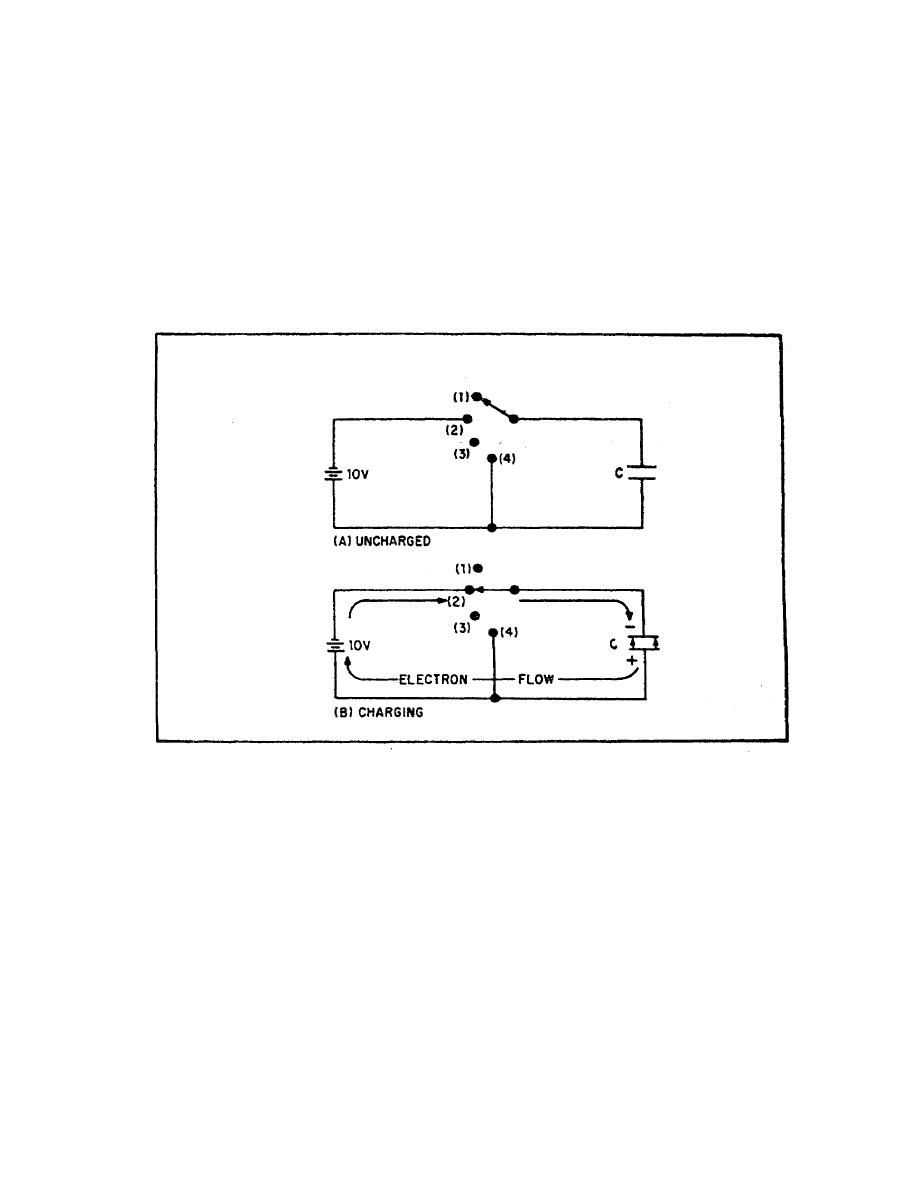
ELECTRONIC PRINCIPLES - OD1647 - LESSON 1/TASK 1
g. Charging and Discharging a Capacitor.
(1) Charging. In order to better understand the action of a
capacitor in conjunction with other components, the charge and
discharge actions of a purely capacitive circuit are analyzed
first. For ease of explanation the capacitor and voltage source
shown in figure 31 are assumed to be perfect (no internal
resistance), although this is impossible in practice.
FIGURE 31. CHARGING A CAPACITOR.
In figure 31, view A, an uncharged capacitor is shown connected
to a fourposition switch. With the switch in position 1 the
circuit is open and no voltage is applied to the capacitor.
Initially each plate of the capacitor is a neutral body and
until a difference of potential is impressed across the
capacitor, no electrostatic field can exist between the plates.
To CHARGE the capacitor, the switch must be thrown to position
2, which places the capacitor across the terminals of the
battery. Under the assumed perfect conditions, the capacitor
would reach full charge instantaneously. However, the charging
action is spread out over a period of time in the
48




 Previous Page
Previous Page
